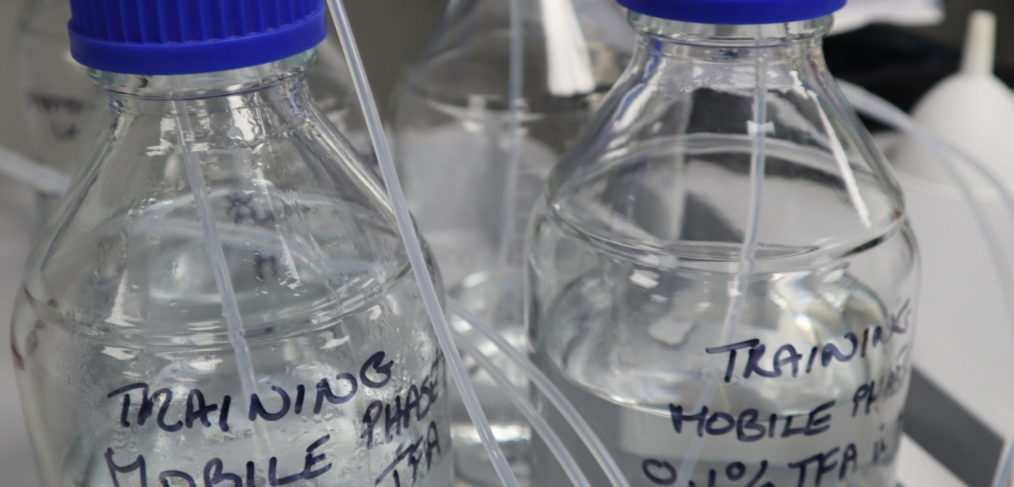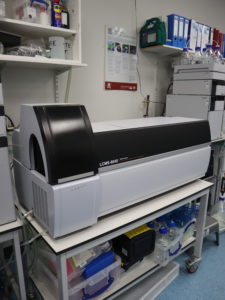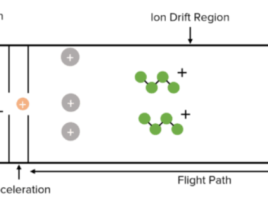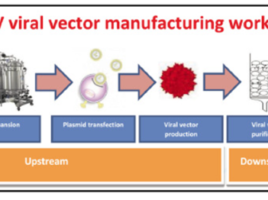
Bioanalytical Methods – An Overview
The quantitative determination of substances and their metabolites in biological fluids is known as bioanalysis. This technique is employed early in the drug development process to aid drug discovery programmes by providing information on the metabolic fate and pharmacokinetics of compounds in living cells and animals.
Techniques used in bioanalysis:
- Chromatographic techniques: HPLC (high performance liquid chromatography), FPLC (Fast Protein Liquid Chromatography), CE (Capillary Electrophoresis).
- Hyphenated techniques: LC-MS (liquid chromatography – mass spectrometry), GC-MS (gas chromatography – mass spectrometry), CE-MS (capillary electrophoresis – mass spectrometry).
High-Performance Liquid Chromatography (HPLC)
HPLC (high-performance liquid chromatography) is an analytical technique for separating, identifying, and quantifying each component in a mixture.
There are three basic types of liquid chromatographic columns: liquid-liquid, liquid-solid, and ion-exchange (1).
- Liquid-liquid extraction
Liquid-liquid extraction, also known as solvent extraction and partitioning, is a technique for separating chemicals or metal complexes based on their relative solubilities in two immiscible liquids, commonly water (polar) and an organic solvent (non-polar) (1).
- Solid phase extraction
Solid phase extraction (SPE) is a technique for preparing and purifying samples quickly and selectively. SPE involves extracting, partitioning, and/or adsorbing one or more analytes from a liquid sample onto a solid stationary phase (1).
- Ion-exchange
Ion exchange chromatography is a chromatographic separation technique that is based primarily on a compound’s net charge and is commonly used to track deamidation of proteins and succinimide production (2). The chromatographic matrix is directly related to positive (cationic) or negative (anionic) charge moieties (2).
HPLC Method Development
Our Nexera XR HPLC system is designed to develop procedures for a variety of samples, ranging from complicated combinations of tiny molecules or proteins to single chemical purification.
If you’d like to learn more about method development, click here to read our blog post about Liquid Chromatography Method Development.
We offer HPLC training. Currently we have two training courses: 3-Day HPLC Training Course and 1-Day HPLC Refresher Training Course.
Click here to find out more about our 3-Day HPLC Training Course
Click here to find out more about our 1-Day HPLC Refresher Training Course
Fast Protein Liquid Chromatography (FPLC)
Fast protein liquid chromatography (FPLC) is a type of medium-pressure chromatography in which the speed of the mobile phase passing through the stationary phase is controlled by a pump.
Large macromolecules such as proteins, nucleotides, and peptides are purified using FPLC (3). It can also be used to profile proteins involved in the purification of animal venoms, and it can detect minor changes in single proteins, which is important in clinical settings (3). Polynucleotides can also be detected using FPLC, which is used to purify RNA and plasmid DNA quickly (3).
Liquid-Chromatography – Mass-Spectrometry (LC-MS)
The technology of bioanalytical liquid chromatography-mass spectrometry combines liquid chromatography and mass spectrometry. In laboratories, LC-MS is commonly used to analyse pharmacological compounds, drug products, and biological materials quantitatively and qualitatively.
LC-MS Method Development
Accurate measurements of drugs, metabolites, and biomarkers in bioanalytical tests require strong bioanalytical method development and validation (1).
Steps in method development (1):
-
Gather information on drug compounds’ physicochemical qualities from the literature.
-
Calculate the solubility profile
-
Mass spectrometry optimization and scanning
-
Select a mobile phase
-
Extraction method selection and optimization
-
Selection of chromatographic method
At the Bio-analysis centre, we have the expertise to design methodologies to quantify most drug-like substances using the Shimadzu LCMS-8040.
We offer mass spectrometry training. Click here to find out more about our training courses.
Gas Chromatography – Mass Spectrometry GC-MS
Gas chromatography is a technique for separating substances in a mixture by injecting a gaseous or liquid sample into a mobile phase, also known as the carrier gas, and passing the gas through a stationary phase (1). The stationary phase might be solid or liquid fixed to a solid carrier. The sample might be either gas or liquid, but it is always injected as a gas or vapour onto the column (1).
Capillary Electrophoresis – Mass Spectrometry CE-MS
CE, or capillary electrophoresis, is a chemical analysis technique that separates molecules in an electric field according to size and charge. Capillary Electrophoresis is carried out in a capillary tube with a sub-millimeter diameter that holds a flowing electrolyte solution.
HPCE (High performance capillary electrophoresis)
HPCE has applications in Life Sciences research, drug testing, diagnostics, and biopharmaceutical production. Proteins, nucleic acids, carbohydrates, viruses and bacteria, chemicals, and a variety of other analytes are detected, separated, and analysed using it. We employ the HPCE-512, a new instrument from deltaDOT that can separate and analyse a wide spectrum of materials, from tiny compounds and amino acids to proteins and Virus-Like Particles.
Click here to read more about our HPCE services
References
- Begum S, Sushmaa BS. Bioanalytical Techniques – An overview. PharmaTutor. 2015 May;3(9); 14-24
- Rifai N. Ion Exchange Chromatography. Clinical Chemistry and Molecular Diagnostics. 2018. Available from: https://www.sciencedirect.com/topics/nursing-and-health-professions/ion-exchange-chromatography
- Webster G. Applications of Fast Protein Liquid Chromatography. (Internet) (Updated 2021 October; Cited 2022 May) Available from: https://www.azolifesciences.com/article/Applications-of-Fast-Protein-Liquid-Chromatography-(FPLC).aspx




